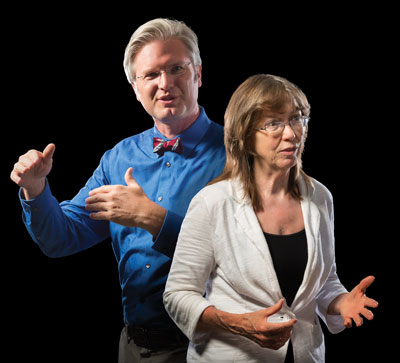Searching for a Data Utopia

CREATING A PATIENT-CENTERED HEALTH SYSTEM, POWERED BY DATA
Limitless. Those are the possibilities for data to transform health care in the future. The sheer volume of information produced will be mind-boggling; but the ways we’ll be able to contextualize, manipulate and interface with data are even more intriguing. Imagine grocery store purchases connected to environmental data linked to wearable devices analyzed with the latest scientific discoveries through an electronic health record accessible to anyone involved in our care. Here we try to imagine just a few of those futuristic scenarios and the power they have to revolutionize health care.
IMAGINE IF...
A PATIENT JUST DIAGNOSED WITH BREAST CANCER could access online reviews of oncologists, compare the outcomes for various cancer centers and even see the costs for treatments to choose the best provider for her care. She could compare symptoms, treatments and experiences of similar patients, share her own health data so other patients and researchers could learn from it, and align the latest research on her condition with her personal health goals to jointly develop a treatment plan with her provider.
USER-FRIENDLY INTERFACES THAT FILTER AND CONTEXTUALIZE DATA THE CANCER CENTER SHE CHOOSES could run algorithms to find relevant information about her family history, current medications and other existing conditions that might inform her treatment. Combining this personal information with the latest population and research data, the center could suggest treatment options and even rank the options based on their potential for success, lowest cost and highest quality.
THE ONCOLOGIST SHE CHOOSES could access her entire family medical history, complete genome sequence, the latest scientific research and public health trends about her particular type of cancer. The provider could quickly identify patients with similar disease characteristics and view their treatment outcomes, and even see the way similar patients talk about their disease and treatment on social media. The patient and oncologist would work together to customize a treatment plan using the latest care pathways, evidence-based knowledge and the patient’s specific health goals. All providers on the patient’s care team, regardless of where they work, could access this information.
THE CANCER RESEARCH COMMUNITY could access the patient’s information and aggregate it with data from other patients. The results of that research would then become the evidence base for future decision-making, empowering the patient to help effect change for her children and grandchildren, who may experience the same cancer in the future.




